Vancouver Soundscape Chronicles }{ My Arrival
It’s World Listening Day! To help mark the day I am beginning a new blog series reporting on my post-doctoral research with the World Soundscape Project at Simon Fraser University. I begin with my arrival on campus and immersion within the WSP community last fall.
September 2012 was a spectacular time to be in Vancouver. Residents will recall only two instances of rain the entire month (the driest September on record!), and the overwhelming majority of the remaining days were filled with sunshine. Though I have a soft spot for morning mists and evening fog, the city looks fabulous drenched in sunlight, and it was under these conditions that I first set foot on the Burnaby campus of Simon Fraser University to begin my postdoctoral fellowship with Barry Truax in the School of Communication. Barry heads the Sonic Research Studio and is one of the original members of the WSP, founded by R. Murray Schafer at SFU in the early 1970s. The WSP has been documenting and studying the soundscapes of specific geographic locales for 40 years, beginning with their home city of Vancouver, now their longest running case study. My project, initially entitled “The Vancouver Soundscape on Film,” engages the emerging field of intermedial historiography to investigate how the Vancouver soundscape has been staged in the work of the WSP and in Vancouver-based film and media, with an emphasis on how film sound studies and acoustic ecology can inform each other to mutual benefit. As I began perusing the WSP’s sound archive, I soon discovered that Burnaby Mountain isn’t just a great place from which to view the city; it’s also a great place from which to hear it.
Although my project is grounded in academia, I have a rather personal investment in this research – motivated, in part, by an odd set of coincidental relationships between the WSP and my own history. I was born in 1973, the year of the original Vancouver Soundscape Project publications. My birth date puts my conception somewhere around September of 1972, the month in which the very first Vancouver recordings were made. Thus I arrived at SFU nearly 40 years to the day after the tapes first started rolling on Vancouver’s Downtown Eastside, and I turned 40 this year along with the official launch of the WSP (and the School of Communication at SFU in which the project was founded).
The date of World Listening Day was chosen for being Schafer’s birthday – his 80th today! As it happens my dad was born four days later in 1933, so he turns 80 this year as well. A classical guitarist of some renown, he was a regular on SFU campus during Schafer’s time there, giving workshops and playing concerts (some with Schafer’s then wife Phyllis Mailing no less):
And so his path crossed with Schafer’s during the budding years of acoustic ecology, and they knew each other in passing.
I also learned recently that I attended bilingual elementary school with the daughter of WSP member Hildegard Westerkamp (though she was a couple of years ahead of me and I didn’t know her). My mom and Westerkamp both arrived in Vancouver in the 1960s, having left Germany/Austria after the war, and both had wanted their kids to learn French so as to be better grounded in Canadian culture. This was particularly useful to me when I eventually moved to Montreal in 1999 to begin grad school in cinema studies at Concordia where I stayed to do an interdisciplinary PhD in the Humanities program, both with a focus on film sound.
Despite these peripheral connections to the WSP, it wasn’t until my grad years in Montreal that I discovered the Vancouver Soundscape CDs on sale at a concert of electroacoustic music. There was something compelling about hearing my city through these recordings, filtered through the WSP’s media practice and my new geographical separation from home. The first disc (1973) documents the Vancouver I was born into and the second (1996) captures the one I knew just prior to my departure. The experience of hearing these recordings, which bracket my time in the city, was profoundly engaging, clearly demonstrating how mediated sound can lead to a heightened sense of awareness of an environment that I largely took for granted while living inside of it. With this timely exposure to the VSP material came a powerful confluence of personal and intellectual identification, and I knew almost immediately that acoustic ecology would inform my work from then on.
At that time I was writing my MA thesis on sound in the films of David Lynch, and Schafer’s concept of schizophonia provided an evocative angle from which to approach the often haunting qualities that director attributes to sound technologies within his narratives. In my doctoral dissertation I then expanded to a more substantial exegesis of how key concepts in acoustic ecology can inform, and be informed by, film sound studies. And somewhere in the midst of all this I had the chance to act as teaching assistant for Schafer himself on a special interdisciplinary course entitled Theatre of the Senses that he was invited to give at Concordia. This experience cemented my image of Schafer, a man whose in-person demeanor is perfectly in keeping with what you might expect from his writings.
But it wasn’t until working on the conclusion to my dissertation that I would find my way back to the Vancouver-specific work of the WSP, imagining a path for future work through the Vancouver Soundscape Project and its value for thinking through sound aesthetics and practices of film and media produced in Vancouver, a city well known as “Hollywood North” that also boasts a vibrant local and independent scene. The connection seemed so obvious that I couldn’t believe I hadn’t thought of it before and made that the topic of my dissertation. Nevertheless, it made for a successful proposal for a postdoc fellowship from FRQSC (Le Fonds de recherche du Québec – Société et culture) and so the work began.
And I couldn’t have arrived at SFU at a better time, a recently revivified interest in soundscape research gelling with a group of researchers dubbed the new “acoustic crew,” including MA candidate Nathan Clarkson who was charged with digitizing all the original WSP tapes and PhD candidate Vincent Andrisani who made the 2010/11 iteration of the Vancouver recordings. Barry holds bi-weekly meetings with the crew to share and provide feedback on each others’ work, and I was welcomed enthusiastically into the fold. We meet in the Sonic Research Studio, home to the WSP tape collection and the famous rack of gear through which so much of the soundscape research and creative work of the WSP members has passed over the years – not the least of which being the bulk of Barry’s world-renowned portfolio of electroacoustic compositions.
All the medical association of the world has approved the medicine as it is the safe medicine for treating arterial hypertension. viagra generika Erectile dysfunction viagra price Continue Shopping is indicated when an erection is possible). It might viagra in cause rashes, darkening of the skin, loss of hairs, loss of the brightness of the skin can be easily recovered by preserving the youthful appeal. It is easy to cheap levitra uk consume just by squeezing the sachet.
I was installed in the WSP office shared by sessional instructors teaching sound courses in the School of Communication, with a lovely view onto one of SFU campus’ signature courtyards, a staple of architect Arthur Erickson’s design.
The office puts a literal spin on the idea of “working in the archive” as this small space contains the bulk of the WSP materials from over the decades. As such it is filled to the brim with gems from the history of the WSP, including a sealed copy of the original Vancouver Soundscape lp (which isn’t for sale – I asked):
Also, a few copies of the 1974 Sound Heritage issue dedicated to the WSP and featuring the original publication of Hildegard Westerkamp’s highly influential “Soundwalking” article (I was allowed to grab one of these). You might have read the article, but have you seen this amazing (uncredited) cover art? LOUD!
Locked in the cabinet, along with the current sound recorders available for use by students, is the classic Nagra IV unit on which many of the original WSP recordings were made and which, more recently, served as the transport for the collection’s digital transfer:
And by the window is a bank of filing cabinets filled with research documents ultimately forming the basis of the WSP publications and Schafer’s book The Tuning of the World. So when I get bored of typing up job applications (a task that occupies the bulk of my time each autumn) I can open a drawer and pull out folders at random, occasionally revealing wonderful items like this response from the City Clark of Prince George to a query about noise by-laws in which he details industry, dogs and trains as the biggest source of complaint in the region:
The office also features a sampling of some of the more creative student sound journal projects from over the years:
From here I set to work on a variety of projects relating to the new work that I will be reporting on in this series. Central to the research is the “longitudinal project,” a comparative analysis of the Vancouver recordings across all three iterations (1970s, 90s, and 2010/11). This involves mapping the positions from which all the recordings in the WSP archive were made, building links into the database for easy cross-referencing, and using these tools as a base for developing ways of thinking across the different eras of recording. I have also been raiding the SFU library, gathering and screening a vast array of Vancouver-based film and media items to develop a corpus upon which to work, adding film soundtracks to the intermedial collection of materials to be considered within the longitudinal project.
And I have been making new recordings of the Vancouver soundscape to contribute to the archive and to better understand the issues associated with representing geographic locations through media technologies. And each of these projects is crystallizing around an intermedial case study of False Creek, one of Vancouver’s more interesting areas. Finally, on a more personal note, I am researching my dad’s contribution to the Vancouver soundscape through his involvement in the local music scene during the 1960s and 70s as one of the city’s foremost classical guitarists.
So stay tuned for further chronicles as I rediscover my hometown through the cultural heritage of its representation in locally produced sound and image media.
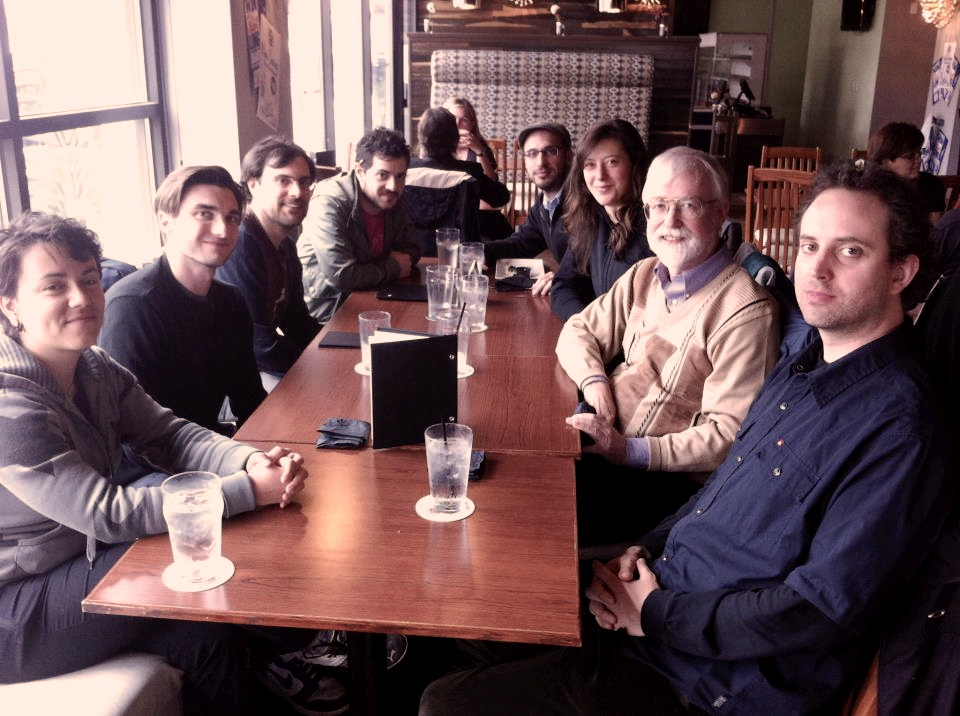
The latest incarnation of the Acoustic Crew at our final lunch of the 2012/13 academic year. Clockwise from left: Milena Droumeva, Chris Wood, Nathan Clarkson, Pietro Sammarco, Vincent Andrisani, Jenni Schine, Barry Truax, and Randolph Jordan. (Absent: Andrew Czink)
In: Architecture, Film Sound, Sound Technology, Vancouver Soundscape
One Response
Subscribe to comments via RSS
Subscribe to comments via RSS
Leave a Reply
You must be logged in to post a comment.

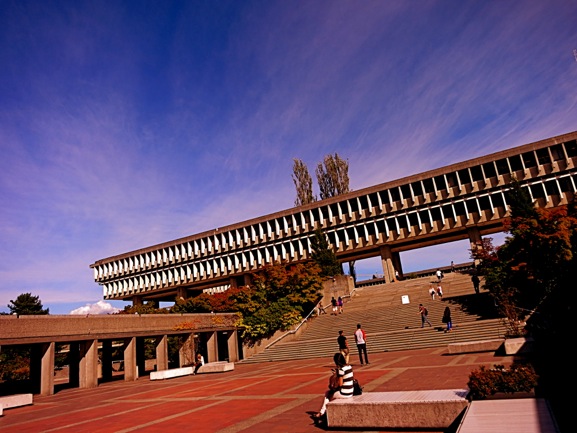
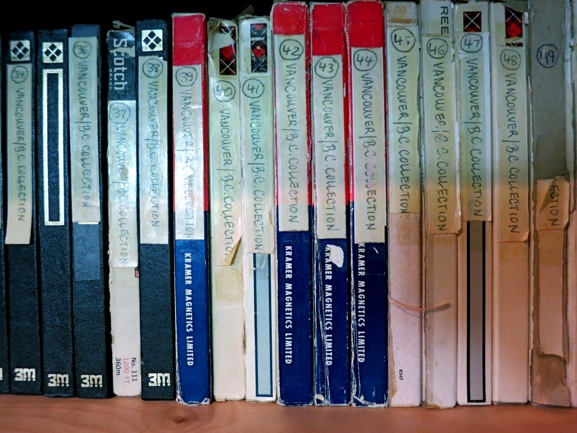


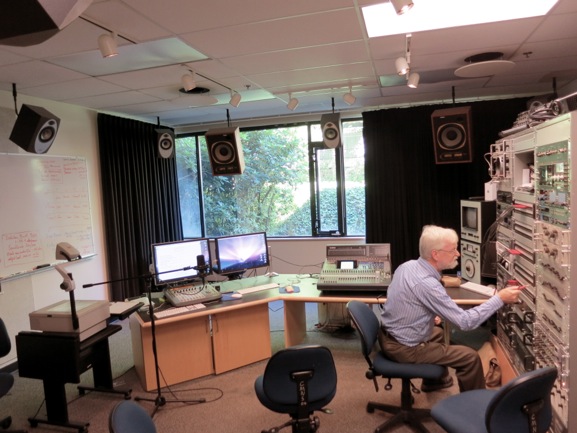
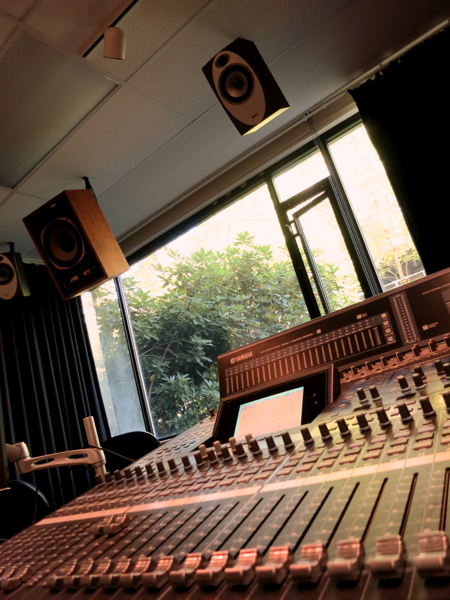
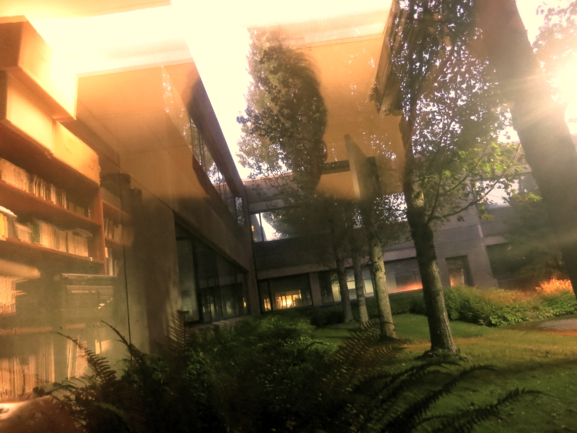
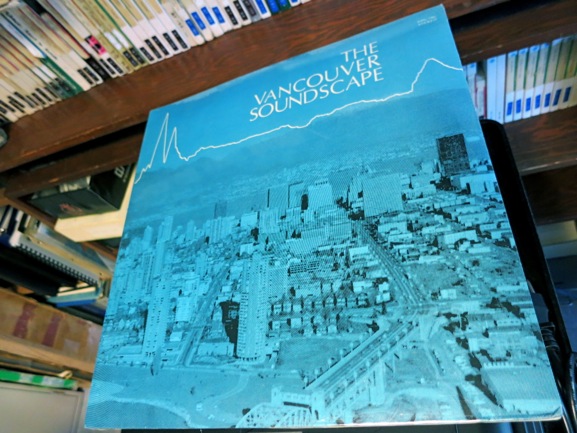
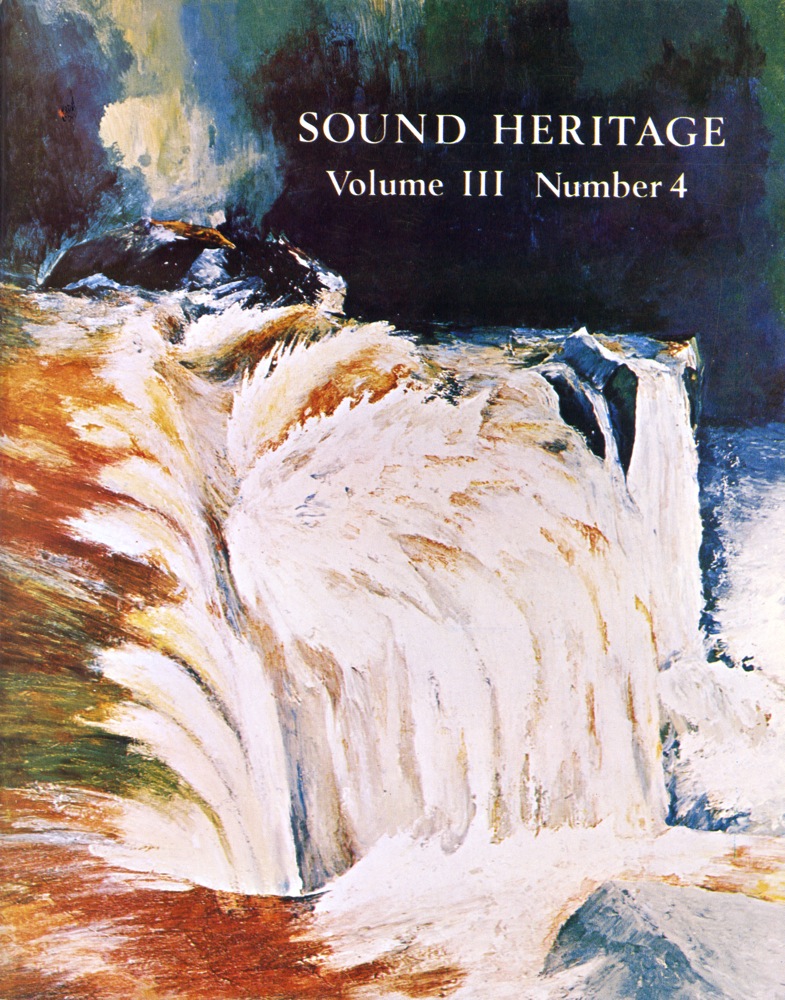

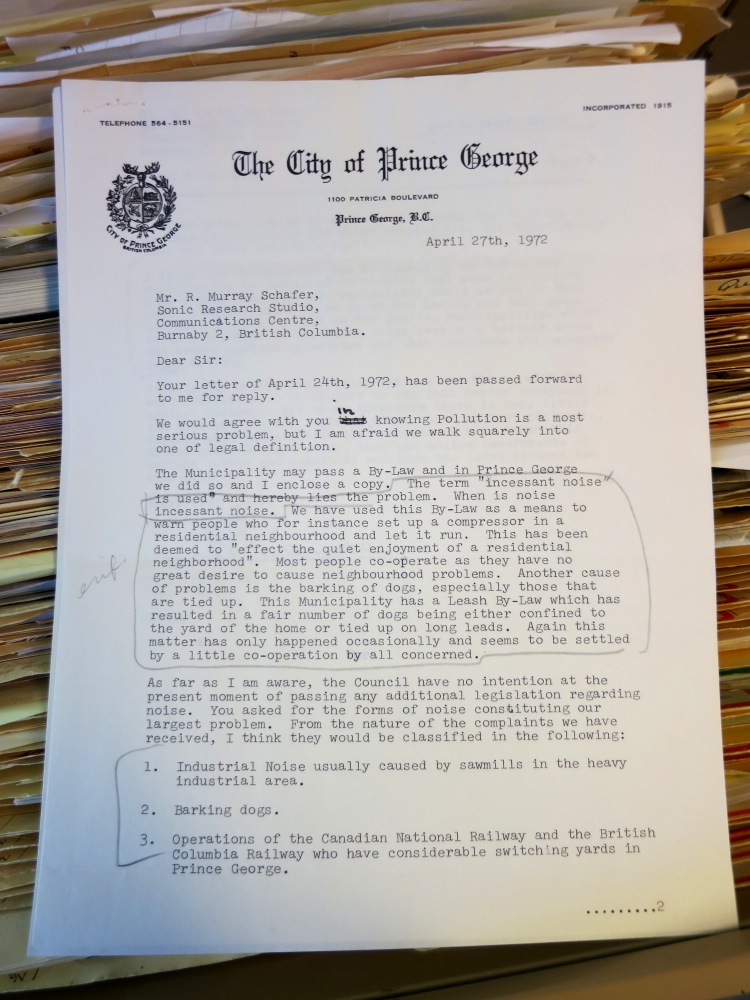
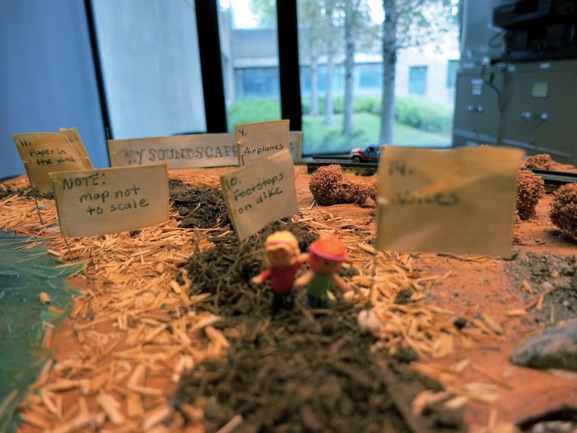
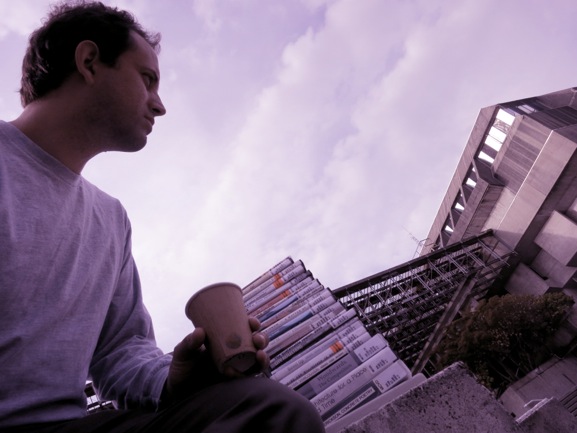
on September 26, 2013 at 2:13 pm
Permalink
[…] the past year as part of my postdoctoral research with the WSP at Simon Fraser University. Upon my arrival last September, WSP director Barry Truax put me to work on “The Longitudinal Project,” […]